 Trek intends to allow you to buy all their bikes online–a huge move for a huge brand. Trek Bikes photo.
Trek intends to allow you to buy all their bikes online–a huge move for a huge brand. Trek Bikes photo.
According to Bicycle Retailer, and company president John Burke, Trek Bicycles will now be selling bikes directly to consumer under a program called Trek Connect. This is partially in response to disruptive (and popular) direct-selling practices by smaller companies like YT and Canyon–and bigger ones like Chain Reaction Cycles. Burke says the initiative has been in development for about two years, but the writing on the wall has been there far longer. Amazon and online shopping have been crushing brick and mortar for over a decade.
Ok, so… what does this mean for you, and your local bike shop? Are big companies land-grabbing? Will small shops go under (faster)? Will they counter by also selling online?
Small independent bike dealers are understandably nervous about any change. They operate on razor-thin margins and have witnessed online outlets broadside their business. I talked to Eric Bjorling, Trek Bicycle’s Brand Communications Director, to get a little more information on the whole issue. He stated this omni-channel platform was crafted to help include the retailer, not exclude them, from the changing way people are buying. Trek Connect was developed out of buying trends they’ve been seeing in Europe, Asia, South America and here in the U.S., as well as those direct-to-consumer sites.
To be clear, Trek keeps no markup on any bikes sold from the site, it all gets passed to a retail store.
Trek is a big multi-national company and, judging from Burke’s quote on how this initiative will represent the “largest investment Trek has ever made,” I feel there should be more than a little intelligent industry problem-solving with this spend. If not, I’ll be really disappointed.
Online buying may force the industry to evolve over several years, but there will be a few immediate impacts: First, Trek will warehouse more inventory for longer periods, so independent bike dealers won’t have to pay for as much inventory in the fall, take delivery of a few hundred (or whatever) boxes, and have their cash tied up for months holding units on their floor or at a costly additional warehouse space.
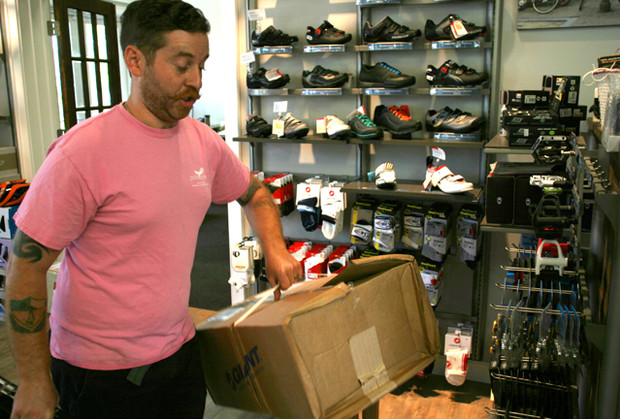 Through Trek's new initiative, people will be encouraged to buy stuff online for shop assembly, and won't be castigated as douchebags. Gunnar Waldman photo. (to be clear, this guy actually works at a bike shop and is in no way, shape, or form, a douchebag).
Through Trek's new initiative, people will be encouraged to buy stuff online for shop assembly, and won't be castigated as douchebags. Gunnar Waldman photo. (to be clear, this guy actually works at a bike shop and is in no way, shape, or form, a douchebag).
As part of the initiative, a new distribution center is going up in Johnson Creek, Wisconsin to get product out to retailers more efficiently. This will allow for more rolling shipping, alleviating the massive spikes at certain periods. Though overall units shipped to each retailer and the number of retailers won’t change that much, as customers still need to pick bikes up at the store.
Stores will be more able to sell whichever way the wind is blowing and not worry about moving only the exact units they have on the floor. The onus for guessing which bikes will be successful six months in advance is eased.
RELATED: How to find the right bike shop for you
Bjorling also mentions Trek Connect enables retailers to carry wider virtual inventory so consumers can shop for a bike that would otherwise not be carried in their region. Dorothy can get a DH bike in Kansas.
But, warehouse and additional personnel are more a smart policy shift than a massive initiative. So, moving forward, where might this ‘largest investment’ be realized?
#1: An Enhanced Digital Platform, Not Just an Online Register
 Americans are still reluctant to buy high-ticket items–like mountain bikes–direct online. Trek Bikes photo.
Americans are still reluctant to buy high-ticket items–like mountain bikes–direct online. Trek Bikes photo.
How to win in digital: add value, elevate experience and functionality. I hope Trek Connect will be more than Trek merely taking your money in a different way and shipping to a shop for assembly. I want this to make my life better.
The first problem for Trek? Americans are not yet conditioned to purchase high-ticket durable goods online. The average non-holiday online shopping order is around $73. Bikes cost in the high hundreds and thousands so, leaving aside your super-sophisticated bike purchaser (who are the ones to buying YT or Canyon rides sight-unseen), Trek won’t be able to just push the site live and start raking in orders. They will absolutely need bike dealers in this mix for consumer confidence. Of course, there are some very nice benefits to shopping online (more on that later) that help consumer confidence.
#2: Bike Customization Across The Board
I would also like Trek’s Project One features to roll into all bikes. Bjornling says Trek can’t yet cost-effectively offer deep customization across the board, but it’s not impossible to see going forward. For the Millennial generation, individuality and a deeper meaning to their buying is very attractive. Of course, what IS impossible is to have a marketing discussion without the word Millennial.
#3: Better Online Tools For Bike Buyers
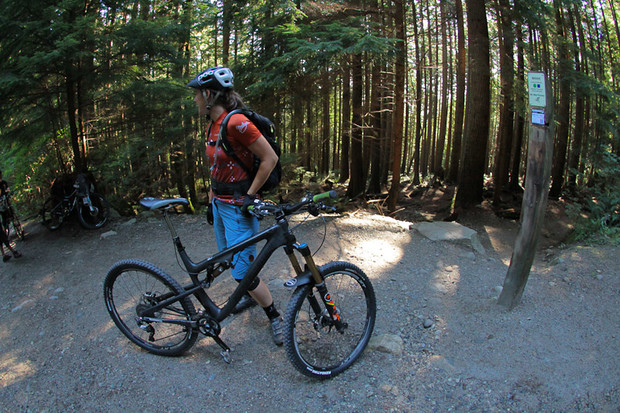 Currently, some of the only resources for getting a properly-fit bike online are asking riders in forums what sizes they ride–hardly an Amazon-age strategy. Ryan Dunfee photo.
Currently, some of the only resources for getting a properly-fit bike online are asking riders in forums what sizes they ride–hardly an Amazon-age strategy. Ryan Dunfee photo.
Moreover, I would hope for a robust online sizing toolset, whereby a customer uploads a photo, inputs one or two simple metrics (height, arm and/or leg length, maybe drag a dot or two over your hip joint, elbow and belly button) and, voila, semi-accurate measurements. Bike retail sites like Competitive Cyclist have had fit calculators for years.
Trek will have live chat, but will not launch with any hardcore customization or fit tools on the first round. Which I guess is fine; pros at shops will probably do that better. But someday soon, a bike you buy online should deliver with the right size stem, the right saddle, the right crankarm length, the right Q factor, the right width handlebar, the right amount of spacers on the steerer tube, etc. Seriously.
#4: Using Social Media To Provide Long-Term Relationships with Clients
Digital is also the place to start meaningful, customer-focused dialog. Consumers must opt into an account to buy a bike. So, Trek Connect should reward that by adding value and maintaining that relationship long-term. Bjorling says the site will know your location (including the type of terrain in your area) and your local store, and can co-brand and customize dialog with your LBS.
#5: Better Marketing Support for Shops & Less Pressure on Customers
 Let's hope Trek can seamlessly pair bike's in-shop strengths, like good fitting, with what the company will offer online, like a low-pressure buying environment. Trek Bikes photo.
Let's hope Trek can seamlessly pair bike's in-shop strengths, like good fitting, with what the company will offer online, like a low-pressure buying environment. Trek Bikes photo.
For a small fee to the retailer, Trek will package up its “Trek Connect Retail Marketing” suite of customized tools. These include automated emails to consumers, digital coupons redeemable only at the customer’s local store, and custom social components. There are also direct mailings that include 4 seasonally-relevant catalogs (again, all customized to the local store) per year.
If someone does visit their local bike shop first, the shop can take measurements, fit the bike and load your metrics into an online profile to get you started (if they don’t have a bike for you). You can then go home and noodle around with colors, carbon options, and price point choices without anybody breathing down your neck. Which is awesome–the upside to online shopping is having a quiet moment to reflect on your bank account without pressure. A website also enables you to compare different bikes side by side several times without that creeping feeling that you're wasting a sales person's time.
#6: Better Support for Retail Shops
All bikes bought on the platform HAVE to ship, and give margin, to a store. The big win here, according to Bicycle Retailer, is “The [customer's] chosen retailer will receive a service commission equal to their normal margin… minus an estimation of the costs that Trek shoulders (and the retailer avoids) in making the online sale. That includes the cost of carrying the inventory, shipping and sales… retailers will receive roughly 80% of their normal margin.” This sounds like a good split. Also, retailers will eat less margin on remainder inventory they have to blow out in January or the following year at a massive discount. To be clear, Trek keeps no markup on any bikes sold from the site; it all gets passed to a retail store.
RELATED: The comprehensive guide to buying your next mountain bike
Also, while you can buy Bontrager, Garmin and Parktool accessories and get them shipped to your home from the platform, if you pick them up at your local shop, there will be no shipping charge. Which is a nice way to drive traffic to stores.
The bike shop will contact you when your bike or parts are assembled and ready. Some stores will offer the option of home delivery.
#7: Better Training for Mechanics
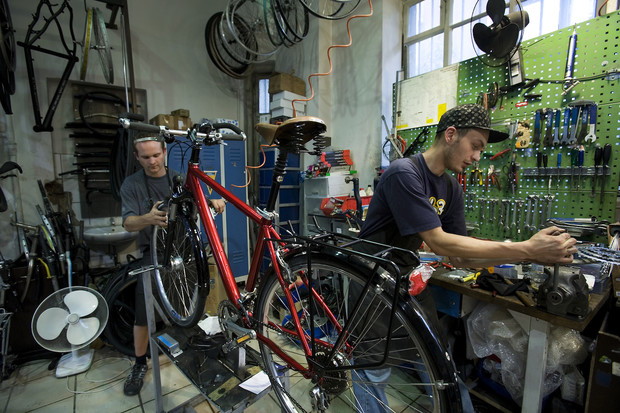 These guys hopefully get better training. Wikimedia photo.
These guys hopefully get better training. Wikimedia photo.
Trek is also building a 5,000-square-foot service education center at its Waterloo, Wisconsin factory to train about 1,000 partner service personnel next year, and each following year. Being able to expect a high level of service from any wrench at a shop will be awesome. It means I don’t have to stick around or casually slip in “So… who’s servicing the bearings/fork/shock on my bike?”
As retailers shift more toward the higher-margin business of service (to highlight the discrepancy between service and bike profit margins, service accounts for 7% of an average store’s revenue, but 25% of total profit!), offering a high level of expertise in this area is critical. And Trek is helping enable that.
#8: Better Shipping
We all know what Amazon Prime can do, and I’d have been shocked if there wasn’t some sort of easy-ship/return process developed with a major shipping carrier. In fact, there is a new partnership with Trek and the USPS for all shipping that happens through the new platform.
For the love of God, solve getting a bike around the country and you’ll have my business forever. In fact, call that service with USPS "TrekShip”. Build reusable polymer point-to-point bike boxes, ship at a reasonable rate and I’ll LOVE YOU. You already have bike shops serving as de-facto shipping nodes. Let me drop my Trek bike off at a Trek dealer, fly, and then pick it up at another Trek dealer for $50.
#9: Better Returns (Hopefully?)
 Doesn't fit? Don't like it? We hope Trek improves on the existing "return" policies that buyers and shop owners currently face. Austin Hopkins photo.
Doesn't fit? Don't like it? We hope Trek improves on the existing "return" policies that buyers and shop owners currently face. Austin Hopkins photo.
The still-sticky point for the retailer is how returns will be addressed. Trek asks retailers to go over any bike purchased online with consumers (after delivery) and really make sure they bought the right one. If the customer determines it’s the wrong bike, their card is refunded and the bike shop is then billed the wholesale rate and has to keep the bike on their floor. Some would say that’s not ideal. Including me. And retailers I talked to about this option were a bit freaked out by this.
But Bjorling points out that, given their return rates, Trek’s projection is that this will equate to one bike per year per retailer being returned (however, if Trek estimates 3-5% of a shop's sales coming on Connect, one bike returned makes the return percentage higher on Connect than on bikes bought off the shop floor). Some stores will have a bit more exposure and some less. Customers will come away fine, but the outlier scenario is that a customer buys a bike not commonly sold in that area, rides it a few times, returns it used, gets a refund and the store has to pay for it. It's my guess this policy will change or be somewhat mitigated at some point in the future.
Also, Trek will be working with retailers so the website will show ‘shops with this bike in your local area’ as an option so a customer can just go through a store - or check it out before buying online.
#10: MORE Women Riding
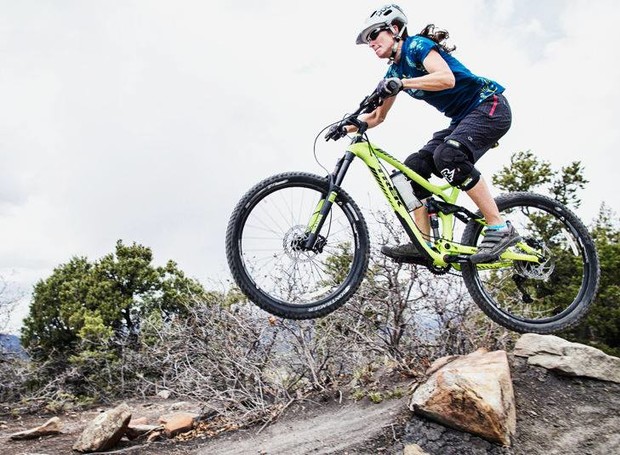 With most mainstream bike media focused on male riders, the segmentation possibilities of online marketing should encourage more ladies to get into the sport. Trek Bikes photo.
With most mainstream bike media focused on male riders, the segmentation possibilities of online marketing should encourage more ladies to get into the sport. Trek Bikes photo.
The Bicycle Retailer article states Trek will offer "tools" to help dealers increase sales to women. Burke states women’s sales will amount to half of all bike shop sales by 2020. Bjorling supports this statement, but says this is trend analysis more than anything driven by the Trek Connect platform. However, a digital relationship opens up more segmentation in data collection and marketing. So Trek’s ongoing messaging (which, again, is customized for local shops) can be more tailored when sent to female consumers. Email and other direct marketing will probably be more relevant and more effective than the dude-focused messaging most women cyclists now get.
What your LBS will look like in a few years.
 Shops should free up space that used to be devoted to new bikes to grow repair space or sell coffee and beer. And enhance their status as centers of the local bike community. Photo from a group ride held by Jackson Holes' Hub bike shop.
Shops should free up space that used to be devoted to new bikes to grow repair space or sell coffee and beer. And enhance their status as centers of the local bike community. Photo from a group ride held by Jackson Holes' Hub bike shop.
As I've said before, a relationship with a quality local bike shop is critical to your riding happiness. You should seek that out and maintain it. It will never go away. Truthfully, even the best diversified bike retailers only do 18% of their business online. Trek feels Connect's numbers will be far lower, maybe 3-5% for their stores. So Trek Connect isn’t going to disrupt that much in the first couple years. However, I feel smart retailers will quickly find a way to use the service to reduce inventory, diversify their offerings, target their marketing more effectively and shift focus to service and experience.
But do expect change. Stores can use freed retail space that was just holding inventory for beer, coffee, local goods, bigger fitting rooms or a larger workshop area. Or a slick and elaborate fit station that integrates with Trek’s online tool. Make people feel awesome about getting fitted–like a sharp suit.
And finally, I think more and more shops will focus on the experience of cycling. Every good shop I know is already doing this to some degree. They will be community centers that offer races, kits, clinics, club rides, trips, fitting and a place to hang out where we love our sport. The more we ride with someone, the more likely we are to fix anything that breaks there, buy accessory stuff there etc. And if we buy a bike online, shops get paid anyway. Boom.




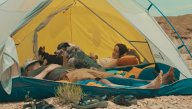

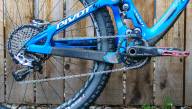



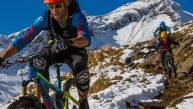
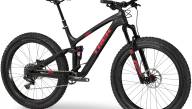




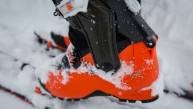






JohnBoy
August 6th, 2015
Interesting article and thought provoking stuff.
Nice job Gunnar.
trailsr
August 7th, 2015
Great read and insight. It’ll be interesting to see how it rolls out. The potential positive impact to LBS cash flow is intriguing. Could represent a major positive at the risk of a few sales ‘slipping past the goalie’ now and again.